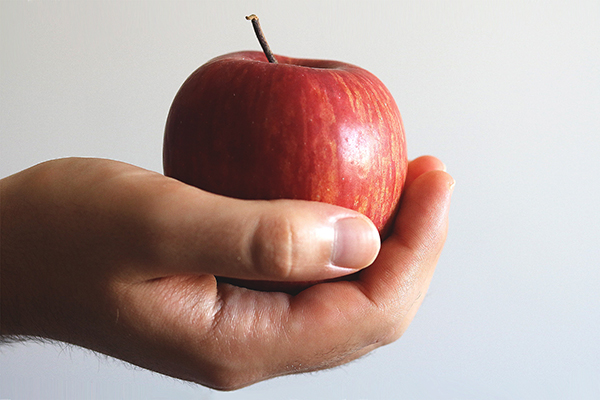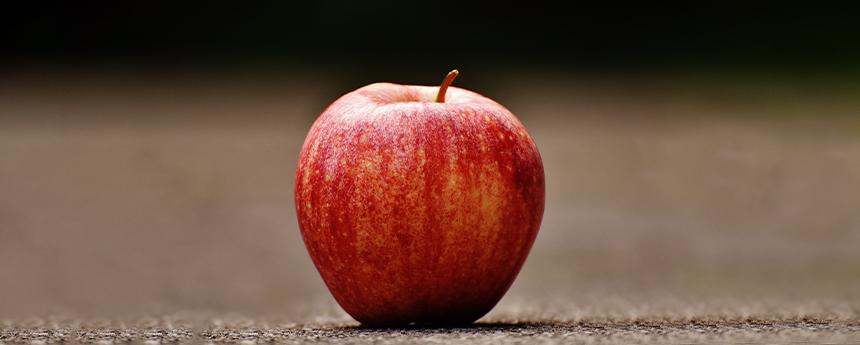- 2022-12-27
Apple Cultivation
Manage
For orchards that did not apply basal fertilizer in the autumn and winter of last year, they should be applied immediately after thawing (but the effect is not as good as autumn application). After fertilization, if the garden is irrigated, it should be watered once, and should be lightly hoeed in time to protect the moisture. Dry land orchards should be raked to protect the moisture, and then fertilized, and then quickly leveled and patted to protect the moisture. Young and weak trees are subsequently covered with a "ribbon" film to increase the temperature and protect the moisture and promote the healthy growth of the tree. The method of fertilization amount is to dig a "ring-shaped ditch" or "trench ditch" with a width and a depth of 50 cm each under the projection of the canopy, apply all of the Qiubei base fertilizer, and mix it with the soil; then sprinkle it in the tree tray Shi Chunbei applied all the topdressing (multiple compound fertilizer, urea, etc.), then turned it into the soil, raked and patted it smoothly. Fertilization requirements: First, try not to damage roots with a diameter of 0.5 cm; second, the top-dressing part of the tree disk should be kept 20-30 cm from the main trunk to avoid damage to the main trunk.
Pruning
In general, the buds in the middle and back of the branches of apple varieties are not easy to germinate. In order to promote the budding of the shoots and reduce the bare legs, you should use a sharp knife or a sharp knife or The small saw blade hurts 1/4-1/3 of the xylem. Then remove the competition (branches) of the central main branch, the buds, the back (branch) buds of the main branch and auxiliary branches, so as to avoid sprout and sprout, waste nutrients and disturb the tree shape.
Insecticide
After the beginning of spring, the temperature gradually rises. Lime-sulfur mixture is still a broad-spectrum, high-efficiency, long-lasting, and low-cost bactericidal, acarid, and insecticide, especially for fruit trees before and after germination. The effect of reducing the base number of various diseases and insect pests, reducing the annual medication, and reducing the cost is very significant.
Lime-sulfur mixture preparation: 10 parts of sulfur powder, 7 parts of quicklime, 60 parts of water. First heat the water, take a small amount of hot water to adjust the sulfur powder into a paste into the pot to boil, then slowly put in the quicklime, increase the heat, and keep stirring until the lime is cast and boil for 45 minutes (the first 15 Use high heat for 30 minutes, then use warm heat for 30 minutes) until the liquid is soy sauce-colored, turn off the heat and cool. After cold, use the Baume specific gravity to measure the accurate concentration. Generally, apple trees older than 3 years are required to spray 100 times "General of Tree Care" + Baume 3 Lithium Sulfur Mixture to clear the garden during the budding period. Not only can they sterilize and kill insects, they can also hit the "gene alarm clock" of the fruit trees to remind the fruit trees to take care of them in time. Wake up during hibernation, stimulate autonomic nerves, and control various red spiders, scale insects and overwintering eggs. In early April, spray biological pesticides to control aphids and top leaf rollers. In early April (after germination), use 0.3% urea solution and potassium dihydrogen phosphate solution alternately spray 1 to 2 times at 7-10 days. It is conducive to strong branches and leaves, promotes the occurrence of new roots, and gradually restores the tree's vigor to ensure long-term energy. Adding 100-fold solution of "Guardian General" to the daily spraying of foliar fertilizer or pesticides on fruit trees can inhibit the replication of infectious viruses, resist airborne virus infection, and protect the population and number of beneficial animals such as earthworms and natural enemies of fruit tree pests. Therefore, while eliminating pests and diseases, it is very important to protect natural enemies.

Double cut
One is that for trees that are too vigorous and do not bear fruit, the winter cutting can be delayed until after germination to ease the tree vigor; the second is that for the more vigorous trees, except for the winter cutting of the backbone branches, the other branches are postponed to be cut after germination to ease the branches. Potential; the third is to enter the fruiting period according to the target yield. If the amount of flowers is too much, a part of the medium and long flowering branches can be shortened, the bunch flowering branches can be shortened, or the weak short flowering branches can be thinned out to reduce the number of flowering branches and increase the number of ready branches.
Sparse buds
The apple tree's buds will be thinned as soon as possible, which can save nutrients, help to sit on the big fruit, and promote the high fruit pile. At the same time, strengthen the tree vigor, promote the growth of spring shoots, make up for the lack of winter cutting. Play the role of saving man-hours, improving efficiency and reducing costs. Under normal climatic conditions, the "flowers determine fruit" technology can be promoted. That is to say, in mid-to-late April, the inflorescence will be red until the inflorescence is separated (the center flower is ready to be placed). The two sides and the back of the mother branch are selected according to the flower cluster spacing of 20-28 cm, except for the center flower and 1 side flower. , The redundant flowers are all thinned out, but the "cluster leaves" must be retained.
Release bee
In the first flowering period (5% of the center flower is open), you should spray 0.3% borax plus 0.1% urea + 1% sucrose aqueous solution in time, or after the flowering and young fruit stage, you can also use the foliage to chase the fruit fertilizer, and you can use 0.3%-0.5 % Of urea + melon and fruit Zhuangti Ling, the effect of improving fruit setting and expanding fruit is very obvious. During the period of fruit expansion, a large amount of nutrition and water needs to be supplied, which requires a strong mother body and a healthy drainage system to meet the physiological needs of fruit development; spray 0.3% borax and 1% honey aqueous solution + fruits in the full bloom period. Zhuang Ti Ling. In order to increase nutrients, conducive to pollination and fruit setting. Placing a box of bees within 500 meters of the orchard during the flowering period can guarantee about 10 acres of pollination and increase the fruit setting rate by 30%-50%.

Fertilize
Fertilization is generally divided into two types: accumulation and top dressing. The specific time depends on the species, the law of fertilizer requirements, and the growth and results of the tree. In general, it is advisable to fertilize 4 times throughout the year:
Fertilizer before flowering or budding (early April).
Fertilizer after flowering (mid-May). These two fertilizers can effectively promote germination and flowering, and prevent defertilization due to the consumption of a large amount of nutrients in flowering, increase the fruit setting rate, and promote the growth of new branches.
Flower bud differentiation and young fruit swelling (from the end of May to early June). This top dressing is to meet the needs of fruit swelling, branch and leaf growth and flower bud differentiation. This fertilization is dominated by potash fertilizer.
The best period of fertilizer application is autumn (early to mid-September). When using farmyard manure as the main fertilizer, the phosphorus is applied in the total amount of the year. In order to give full play to the fertilizer effect, the phosphorus fertilizer must be accumulated and decomposed together with the organic fertilizer, and then mixed and applied. Its function is to ensure the photosynthesis of fruit trees after harvest to before deciduous, improve nutrient accumulation, and lay a solid foundation for the growth and development of fruit trees in the next year. On the basis of these 4 times of fertilization, it is also necessary to consider the combination of foliar spray fertilizer + melon and fruit zhuangdiling. Spray 0.3%-0.5% urea solution + melon and fruit zhuangtiling before July, and spray 0.3%-0.5% potassium dihydrogen phosphate or fruit tree micro-fertilizer + melon and fruit strong base after July. spirit. Fertilization position: The capillary root of the root system is the main organ of the fruit tree to absorb nutrients. The absorption of fertilizer by the fruit tree is mainly completed by the root hairs in the root system. Therefore, fertilizing in the root system distribution area is one of the keys to improving fertilizer efficiency.
soil
In order to promote the normal development of trees and fruits, attention should be paid to soil management in orchards in autumn and winter. Soil management in autumn and winter mainly includes fertilization and irrigation in the orchard, which are introduced below:
Orchard fertilization: When fertilizing orchard soil, attention should be paid to the type of fertilizer source, as well as the time and method of fertilization. In order to improve fruit quality and reduce the occurrence of nutrient deficiency, the use of organic fertilizer and farmyard manure should be promoted. The jinguojin fertilizer proposed in the past is still applicable. Cow and sheep manure and chicken manure are good sources of organic fertilizer. As a commonly used base fertilizer, the fertilization period is usually in autumn. Fertilization from mid-to-late September to early October is most beneficial to root growth and tree nutrient storage. The method of fertilization varies with the age of the tree. During the sapling period, the fertilization is usually combined with soil expansion and hole expansion in the orchard. Every year, the pit is fertilized outside the planting pit. The pit is 40-50 cm deep. The organic fertilizer and the orchard topsoil 1:2 are mixed evenly and then filled into the pit, and then expanded outward. Adult orchards can be cultivated and fertilized throughout the orchard or ditched for fertilization.
Orchard irrigation: Orchard irrigation should be determined according to the amount of natural precipitation. In general years, the orchard needs to be watered during the fruit coloring period or after the fruit is picked. Irrigation during the coloring period is conducive to the development of fruit color. Postharvest irrigation is often carried out simultaneously with fertilization in the orchard, which is conducive to root growth and accumulation of tree nutrients. Localities should determine whether irrigation is needed based on actual moisture conditions.




















